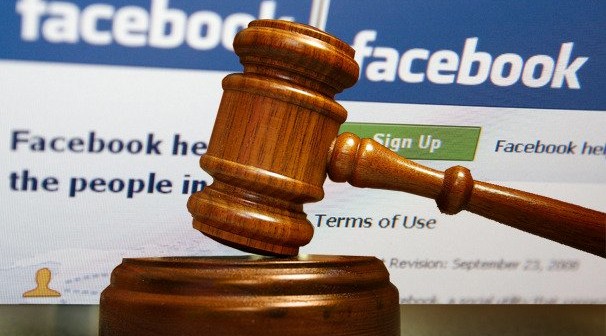In time of recession, one has to admit that crises may be positive because they shed light on anomalies and trigger reforms aimed at coping with these unsolved problems.
Johnson and Post considered the “real world” and cyberspace as two distinguished environments. Though these two words are increasingly intertwined, it is obvious that there are some relevant differences between them. One of these patent differences is that, in the real world, “problems” are tackled by governments whereas, in cyberspace, “problems” are more frequently undertaken by individuals (or groups of individuals).
An obviously “unsolved problem”, sparked by the rising of the Internet, is the intense antagonism between the devotees of the fundamental right to intellectual property – particularly, copyright – and the supporters of what we could define as “freedom to share”, which encompasses the freedom of expression, the freedom of communication and the freedom of information. The former position is usually associated with the economic interests of copyright-holders, whereas the latter supports file-sharing and new forms of content distribution.
Notably, the first decade of the years 2000 has witnessed the crystallization of two opposite positions: on the one hand, the content industry has struggled to impose the economic and juridical model of copyright on the Internet and, on the other hand, the internet community has clearly expressed its willingness to keep on sharing, downloading, etc. any content, disrespectful towards a copyright system that seems to flounder when faced with the Net.
Apart from considerations relative to the inadequacy of the 19th-century-born copyright model to the present-day Information Society, this author finds it useful to focus on some of the answers and potential solutions that, over the past fifteen years, have been proposed by governments and the civil society, in order to solve this issue.
How has copyright affected cyberspace?
In the mid-90s, the copyright industry started to lobby various legislators – especially the U.S. Congress – in order to preserve its interest against the dangers of an Internet “wild West”. In fact, the copyright majors, faced to this all-you-can-share phenomenon, scented the precariousness of their business-model and decided to react firmly. It was indeed clear that a network designed to share any kind of content in an instantaneous and global fashion could simply be antithetic to the very concept of copyright, which gives the creator of an original work the exclusive right to control that work for a limited time.
Obviously, the World Intellectual Property Organization was the most suitable arena to coin a new mechanism for online copyright protection. The WIPO Diplomatic Conference on Certain Copyright and Neighbouring Rights Questions, that took place in 1996, may be seen as fundamental turning point, because it was the first step towards the extension of the IP regime to cyberspace.
The outcomes of the Conference were the WIPO Copyright Treaty and the WIPO Performances and Phonograms Treaty (a.k.a. the WIPO Treaties). According to the International Bureau of WIPO, the Treaties “reflect a broad international agreement as to how copyright and related rights should be handled in today’s environment, including the context of digital technologies”.
These new sources of international law required Countries “to provide a framework of basic rights, allowing creators to control and/or be compensated for the various ways in which their creations are used and enjoyed by others”. Furthermore, they provided “two types of technological adjuncts to ensure that right-holders can effectively use technology to protect their rights and to license their works online”. The first type of technological adjuncts was aimed at protecting authors against hackers through anti-circumvention provisions, whereas the second was aimed at prohibiting the deliberate alteration or deletion of electronic “rights management information” (WIPO Copyright Treaty, art. 11 and 12).
In the United States, the direct – and extraordinarily fast – consequence of the WIPO Treaties has been the adoption of the Digital Millennium Copyright Act (DMCA). The DMCA represents a true cornerstone for IPRs online protection, strengthening the penalties with regard to copyright infringements, giving birth to the notorious notice-and-take-down procedure, and setting so-called safe harbors.
The notice-and-take-down procedure offered a quick procedure to copyright holders so as to disable access to allegedly infringing content, whereas the safe harbor provision accorded an exemption from direct and indirect liability for copyright infringement to ISPs and telecommunication carriers, provided that they comply with the notice-and-take-down procedure.
In the European Union, the implementation of the WIPO Treaties was put in place via two Directives. Indeed, the issues addressed by the DMCA were dealt with by the Electronic Commerce Directive (2000/31/EC) and the Copyright Directive (2001/29/EC). The former established a harmonized set of rules on “issues such as the transparency and information requirements for online service providers, commercial communications, electronic contracts and limitations of liability of intermediary service providers”, whereas the latter set a homogeneous framework for copyright and related rights and encouraged the Member States to “provide adequate legal protection against the circumvention of any effective technological measures”.
Copyright willfulness
Nonetheless, despite the enforcement of this mechanism, the file-sharing and downloading practices haven’t ceased, and the content industry has continued to complain about its considerable losses in revenue due to online piracy. For this reason, over the past fifteen months several Bills were presented before the U.S. Congress bent on further strengthening the copyright online protection.
The bill that inaugurated this conspicuous series of proposals was the Combating Online Infringement and Counterfeits Act (COICA). As Yochai Benkler explained, COICA “clearly identified its target as sites that have ‘no demonstrably commercially significant purpose’ other than providing access through downloading, streaming, or linking to unauthorized materials” and it empowers the US Attorney General “to enforce copyright through criminal law”.
Indeed, under COICA, once a domain name (DN) is blacklisted as unlawful, the Attorney General can request a court order that, if the DN is registered in the USA, would force the DN registrar or DN registry to “suspend operation of the DN”; whereas, if the DN is non-domestic, the order would force the ISPs to “take reasonable steps that will prevent a domain name from resolving to that domain name’s Internet protocol address” (COICA, Section 2[e]).
After COICA, the same approach has been embedded in the Preventing Real Online Threats to Economic Creativity and Theft of Intellectual Property (PROTECT-IP or PIPA) and in the Stop Online Piracy Act (SOPA). All the proposed Bills foresee the possibility of hampering the online advertisers and payment facilitators from doing business with the blacklisted subjects. This draconian technique inevitably reminds this author of the kind of commercial isolation that proved extremely reliable during the Wikileaks affair.
A different perspective
Coming back to our initial crisis-and-reforms consideration, it seems that, to date, anti-copyright practices have been considered as the crisis, whereas the various pieces of legislation and bills have unsuccessfully attempted to solve it. However, if one tries to look at the issue from a different perspective, the IP legislation may be seen as the problem and the all-you-can-share phenomenon as the solution.
This is indeed the approach that has been endorsed by two different initiatives. The first – and mildest – one is Creative Commons, a non-profit organization that, since 2001, has been providing “a set of copyright licenses and tools that create a balance […] between the reality of the Internet and the reality of copyright laws”, whilst the second one – and more revolutionary – is the Darknet Plan, launched a year ago by Chis Bresee, seventeen-year-old, who started a project aimed at creating “a mesh-based version of the Internet that wouldn’t be subject to the control of any corporation or government, with a focus on anonymity, peer-to-peer architecture and strong resistance to censorship”.
These initiatives are linked by their respective objectives. Indeed, they both craft an alternative to a strict form of copyright enforcement: Creative Commons could be seen as an attempt to conciliate the copyright model and the open nature of the Internet, whereas Darknet has to be considered as the bold reaction to a bold SOPA.
So far, Creative Commons has demonstrated its great value, creating a flexible framework to globally protect authors without jeopardizing the sharing potential of the Internet, whilst Darknet is still an extraordinary ambitious project, based on the “nuclear option” of replacing the Internet with a mesh-network.
The moral
IP v. sharing remains an “unsolved problem”, however, one may fairly assert that civil society initiatives have proved to be more captivating than governmental ones.
Indeed, the Internet community wants to keep on sharing. Imposing a draconian copyright enforcement framework doesn’t seem, to this author, to be the most suitable strategy: the stricter will be the copyright enforcement, the bolder the answer of an incredibly creative Internet community will be.
If this was an Aesop fable, the moral would be: “necessity is the mother of invention”.


